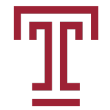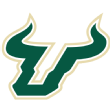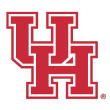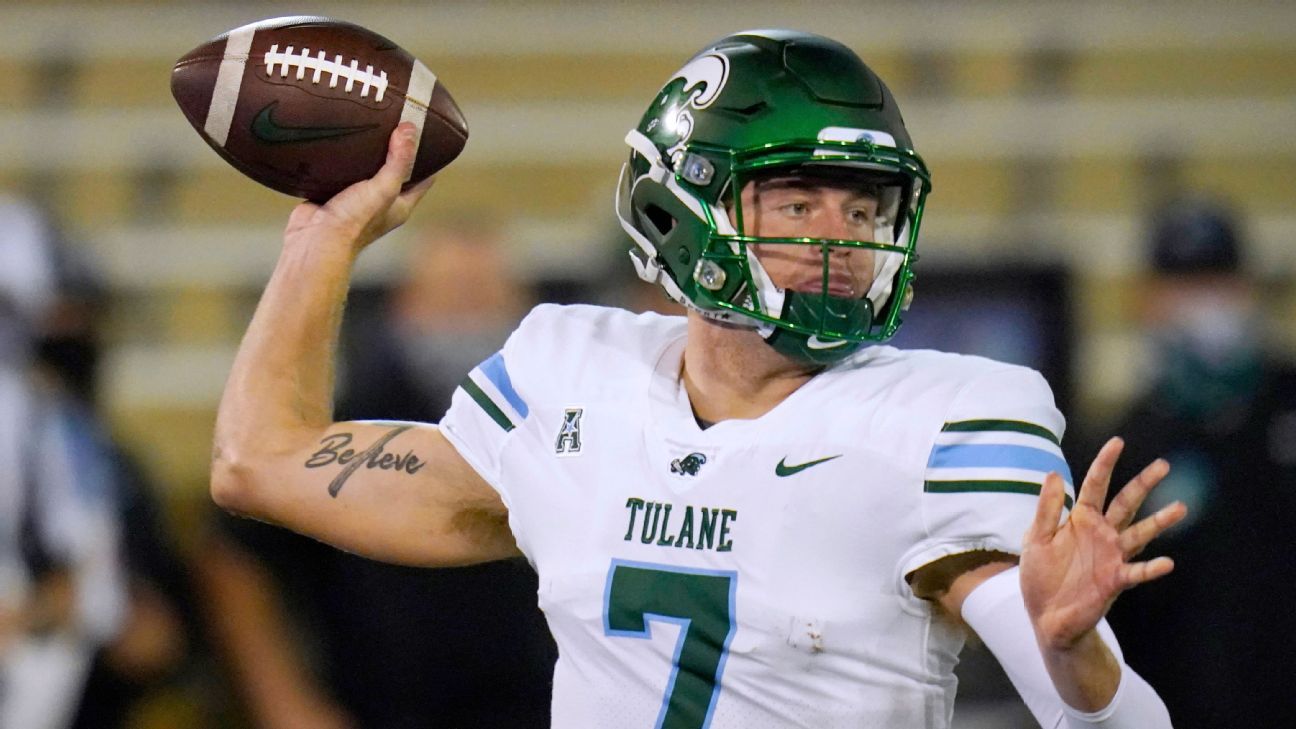The AAC has been, per SP+, the best conference in the Group of 5 for six of the seven years of the College Football Playoff era. For the past two years, it has graded out closer to the worst power conference than any other G5 entity.
The star power of the best teams is obviously one reason for this — Cincinnati finished eighth last season, UCF and Memphis 14th and 17th, respectively, in 2019 — but compared to the rest of the G5, the AAC doesn’t produce a ton of dead weight either. Only two teams ranked in the triple digits last year, compared to four for the MWC and Sun Belt, five for the MAC and seven for Conference USA.
Will that remain the case in 2021? In today’s look at the bottom half of the AAC — teams ranked sixth through 11th, according to SP+ — we will still discuss plenty of upside, especially from Houston, Tulane and perhaps ECU. But Temple, USF and Navy have quite a bit more to prove than usual.
Every week through the summer, Bill Connelly will preview another division from the Group of 5 and Power 5 exclusively for ESPN+, ultimately including all 130 FBS teams. The previews will include 2020 breakdowns, 2021 previews and a brief history of each team in one handy chart. The series has thus far covered the Conference USA East and West, the MAC East and West, the MWC Mountain and West and the Sun Belt West and East.
Jump to a team: Temple | USF | Navy | ECU | Tulane | Houston

What can we learn from a season in which a team’s lineup changes constantly, and its first-string never sees the field intact? Not much, Temple hopes.
2021 Projections
Projected SP+ rank: 119th
Projected record: 3-7 (2-9)
-
Likely wins*: Gardner-Webb (99% win probability), Wagner (96%), at South Alabama (66%)
-
Relative tossups: at Akron (51%), Navy (41%)
-
Likely losses: at USF (31%), at Rutgers (25%), at ECU (23%), Houston (20%), Boston College (17%), Memphis (14%), UCF (9%), at Tulsa (9%), at Cincinnati (1%)
* Likely wins are games in which SP+ projects the scoring margin to be greater than seven points, or above about 65% win probability. Likely losses are the opposite, and relative tossups are all the games in between.
SP+ isn’t designed to take imploding two-deeps into account and, in Rod Carey’s Temple, sees only a 1-6 team that collapsed to 105th. A tough schedule could preclude much of a turnaround.
What we learned about Temple in 2020
Constantly changing lineups is bad. No Owl quarterback played in more than three games. Their leading rusher played in four, their leading receiver six. Nine offensive linemen took at least 70 snaps, only one more than 500. The defense was more stable, but only a bit.
This much instability will test anyone’s depth, and Temple’s failed. The Owls began 1-2 with a win over USF and competitive losses to Navy and Memphis, but things quickly went off the rails. Average score of their last four games: Opponent 38, Temple 11.
The secondary had potential. Despite massive issues pretty much everywhere, Temple ended up 47th in passing success rate allowed and 23rd in completion rate. The pass rush was decent, the corners good. Of course, this would mean more if the best pass rusher (Arnold Ebiketie) and top two corners weren’t gone in 2021.
What we didn’t learn about Temple in 2020
Is the transfer portal the answer? As miserable as last season was, overall experience can be a positive; lots of guys played decent minutes. Still, Carey felt some urgency. From Georgia quarterback D’Wan Mathis to corners Cameron Ruiz (Northwestern) and Keyshawn Paul (UConn), he hit the transfer portal hard to both upgrade the overall talent level and offset his own team’s transfer losses. It’s possible that as many as nine transfers could start for the Owls in 2021.
Temple’s history in one chart
-
After a decent stint in college football’s second division, which included a 1967 Middle Atlantic Conference title, Temple hired Wayne Hardin and moved up to the first division.
-
Hardin was in charge for Temple’s best run of success, peaking at 10-2, with a Garden State Bowl victory, in 1979. Upon his retirement, Hardin was replaced by Bruce Arians.
-
A long decline saw a few different rock bottoms — six different one-win seasons between 1992-2006 and an 0-11 finish in 2005. It was so bad that the Owls were kicked out of the Big East.
-
The hire of Al Golden in 2006 heralded the beginning of a turnaround. From 1-11 in 2006, he had the program at 9-4 just three years later.
-
The modern-day peak came under Matt Rhule in 2015-16: the Owls won 20 games, two AAC East titles and, in 2016, their first conference championship in 49 years.

It may have been a lost season for Temple … but the Owls still beat USF. Jeff Scott’s first season with the Bulls was pretty forgettable in itself.
2021 Projections
Projected SP+ rank: 104th
Projected record: 5-7 (4-4)
-
Likely wins*: Florida A&M (79% win probability), Temple (69%)
-
Relative tossups: at ECU (35%)
-
Likely losses: Houston (30%), Tulsa (24%), at SMU (20%), at Tulane (20%), at BYU (15%), at NC State (12%), at UCF (10%), Cincinnati (6%), Florida (5%)
With only three opponents projected worse than 70th, the ceiling on USF’s 2021 win total is likely pretty low.
What we learned about USF in 2020
Not many good things! Due to both choice and necessity, Scott played pretty much everyone on the roster in 2020 — 44 offensive and defensive players played at least 100 snaps in only nine games. That would be a great thing if standouts emerged, but few did.
Slot man Bryce Miller proved efficient, linebackers Antonio Grier and Dwayne Boyles were sure tacklers and cornerback Daquan Evans emerged as a solid cover man, but the overall product was dreadful. USF finished 108th in SP+, the worst ranking of its football existence, and after seeing what his personnel had to offer, Scott decided to add nine new potential starters via the transfer portal.
The defense will likely come around first. It ranked only 89th in defensive SP+, but sure tackling from the linebackers and safeties resulted in decent big-play prevention; every main linebacker and safeties Mekhi LaPointe and Christopher Townsel return, and Evans and Kansas State transfer Will Jones II could make for a strong duo at CB. The line’s experienced, and tackle Thad Mangum is disruptive against the run. Veteran coordinator Glenn Spencer could do decent things with this unit.
What we didn’t learn about USF in 2020
Whether the offense is salvageable. Charlie Weis Jr.’s attack utilized tempo and threw lots of horizontal passes to Miller and Omarion Dollison in the slot. That worked pretty well, but almost nothing else did. Will that change with the insertion of Miami quarterback Jarren Williams and a trio of power conference skill guys into the mix? Is the return of nine starters actually a good thing?
South Florida’s history in one chart
-
USF’s high point came early in its existence: Jim Leavitt’s Bulls went 9-4 in 2006, then began 2007 6-0 and reached No. 2 in the AP poll before a midseason collapse.
-
George Selvie (2006-09): 69.5 career TFLs and 29 sacks. He peaked as a sophomore but still delivered absurd career numbers.
-
Leavitt was fired in early 2010 for interfering with a player abuse investigation, and USF slid under first Skip Holtz, then Willie Taggart.
-
Taggart won just seven of his first 28 games … then won 18 of his next 22. Experience and some offensive tweaks paid off just in the nick of time. USF finished ranked for the first time in 2016.
-
Scott’s tenure has started out just as poorly as Taggart’s. Does he have a similar surge in store in the next year or two?

A lack of contact in practice assured a slow start for Navy in 2020, and a lack of standout QB play assured that the problems continued in a 3-7 collapse.
2021 Projections
Projected SP+ rank: 100th
Projected record: 3-9 (2-6)
-
Likely wins*: none
-
Relative tossups: at Temple (59%), Air Force (49%), ECU (47%), Marshall (42%)
-
Likely losses: vs. Army (31%), SMU (30%), at Houston (22%), UCF (17%), at Tulsa (17%), at Memphis (16%), Cincinnati (6%), at Notre Dame (6%)
In the last two years, Navy has risen by 70 spots in SP+, then fallen by 66. Without proven option pieces, another surge is far from assured.
What we learned about Navy in 2020
Quality practice matters. The Navy defense had improved from 114th to 53rd in defensive SP+ under coordinator Brian Newberry in 2019, but allowed 8.2 yards per play to BYU and 6.7 over the first seven games. The lack of physicality and contact in practice — which was both intentional and had good, COVID-19-related intentions — had clearly bled onto the field.
The defense rebounded significantly: Navy allowed just 14.7 points per game and 4.1 yards per play in its final three games. Linebacker Diego Fagot, Navy’s tackles and TFLs leader, returns, as do 12 of the 16 players who took 200+ snaps — a fantastic amount of returning production for a school that doesn’t utilize redshirts.
What we didn’t learn about Navy in 2020
When the next great option QB might arrive. Unfortunately, Navy lost all three of the aforementioned late-season games because the offense was dramatically ineffective. Dalen Morris, Tyger Goslin and freshman Xavier Arline all took at least 130 snaps at QB, but none were able to execute the option efficiently, and a remodeled line didn’t help much. Navy suffered more negative plays than usual and fell constantly behind the chains, which hurts any offense but is devastating for the Ken Niumatalolo and Ivin Jasper option attack.
With Morris gone and Goslin moved to slotback, Arline gets first crack at the job. Veteran fullback Jamale Carothers and three experienced linemen are back, but the slotbacks, vital for big-play purposes, are unproven. There’s nothing guaranteeing a huge rebound, though returning simply to an average level could work wonders.
Navy’s history in one chart
-
In 1945, Navy fielded its best team ever the same year that Army fielded maybe the best team ever. Navy lost to Army, tied Notre Dame and outscored everyone else, 201-27.
-
Roger Staubach in 1963: a 67% completion rate with a 145.9 passer rating. That’s the 2021 equivalent, of, what, an 85% completion rate and 250 rating in 2021?
-
After crumbling in the late 1960s, Navy hired the great George Welch in 1973. He had them bowling again by 1978.
-
Another historic low point, another brilliant hire: after going 0-10 in 2001, Navy hired option master Paul Johnson. They were bowling again by 2003.
-
The last few years have been rickety: The Midshipmen went 20-7 in 2015-16, 3-10 in 2018, 11-2 in 2019 and 3-7 in 2020.

Mike Houston’s second year at ECU seemed like wasted time … until the end. Is a two-game surge (to finish a 3-6 campaign) enough to build actual optimism?
2021 Projections
Projected SP+ rank: 91st
Projected record: 5-7 (3-5)
-
Likely wins*: Charleston Southern (96% win probability), Temple (77%)
-
Relative tossups: USF (65%), South Carolina (55%), at Navy (53%), at Marshall (39%), Tulane (39%)
-
Likely losses: at Houston (29%), at Memphis (22%), vs. Appalachian State (17%), at UCF (15%), Cincinnati (9%)
Veteran QB … 20 returning starters … five interesting tossup games … if you want to talk yourself into ECU finally making a bowl run again, you have some optimism for it.
What we learned about ECU in 2020
There’s potential. Despite a young skill corps, quarterback Holton Ahlers produced a passer rating over 140 in five of his last six games. When he wasn’t fumbling, freshman RB Rahjai Harris had major “hit the edge and explode upfield” speed. Sophomore WR C.J. Johnson had a 39% catch rate and averaged 21 yards per catch. Sophomore Tyler Snead was an inconsistent receiver but a terrifying return man. Sophomore safeties Jireh Wilson and Shawn Dourseau combined for six TFLs, eight pass breakups and eight run stuffs.
Players on both sides of the ball showed potential, and after a 1-6 start, ECU finished the season by first erasing Temple’s offense in a 28-3 win, then destroying SMU’s defense and winning 52-38.
What we didn’t learn about ECU in 2020
Whether this flash of potential is any different than the last one. In late 2019, ECU hung 43 points on Cincinnati and 51 on SMU; Ahlers, Johnson and Snead were brilliant in both games. Optimism was high, but then ECU improved only from 93rd to 85th in offensive SP+. Meanwhile, the 2020 defense hinted at upside but still improved only from 120th to 103rd. Upside and potential are great, but they have to turn into something at some point. ECU returns most of last year’s production, but so do a lot of the Pirates’ opponents.
Since ditching Ruffin McNeill following a five-win 2015, ECU has seen one rebuilding false start after another. Did late 2020 show something real, or was it just another two-game burst?
East Carolina’s history in one chart
-
From 1972-79, ECU won 8+ games six times. In 1975, they lost head coach Sonny Randle to Virginia, replaced him with Pat Dye, then beat UVA 61-10.
-
1991: Quarterback Jeff Blake and ECU won 11 games, beat South Carolina, Syracuse, Pitt, Virginia Tech and NC State, and finished ninth in the AP poll.
-
Two years before rushing for 2,006 yards for the Tennessee Titans, Chris Johnson gained 1,951 yards from scrimmage and scored 23 times for an 8-5 ECU.
-
In 2010, Ruffin McNeill hired a 26-year old named Lincoln Riley to run his offense. In 2013, ECU won double-digit games and earned promotion to the AAC.
-
After a 5-7 stumble in 2015, ECU panicked and fired McNeill. The Pirates have averaged 3.2 wins per year since.

Tulane has ranked in the SP+ top 60 twice in 22 years: 2019 and 2020. Willie Fritz has breathed life into a dormant program. Can he move the Green Wave further up the AAC totem pole?
2021 Projections
Projected SP+ rank: 67th
Projected record: 6-6 (4-4)
-
Likely wins*: Morgan State (99% win probability), USF (80%)
-
Relative tossups: UAB (62%), at ECU (61%), Houston (57%), Tulsa (48%), at SMU (43%), at Memphis (37%)
-
Likely losses: at UCF (27%), at Ole Miss (18%), Cincinnati (18%), Oklahoma (9%)
The Green Wave have extended a three-year bowl streak despite losing six of their last seven one-possession games. With as many as six tossups on the schedule, now would be a great time to flip those close-game fortunes.
What we learned about Tulane in 2020
They can still run the ball. Fritz’s offenses have been historically strong on the ground, and in 2020, Tulane had maybe its best run game since he took over. A foursome of backs — Stephon Huderson, Cameron Carroll, Amare Jones and Tyjae Spears — combined for 2,177 yards (6.1 per carry) in 12 games, and despite a freshman quarterback (Michael Pratt) leading an inconsistent passing game, Tulane ranked 39th in offensive SP+.
Only Carroll and Spears return, but they were the most explosive of the bunch, and they’ll be running behind a line that returns four starters. Center Sincere Haynesworth and guard Corey Dublin may be the best run-blocking duo in the conference, and even with a coordinator change — Will Hall, the new Southern Miss head coach, was replaced by former Notre Dame OC Chip Long — all indications suggest they’ll be awesome on the ground again. Pratt has more experience and last year’s top five receivers back, too.
What we didn’t learn about Tulane in 2020
Can the defense become a little bit less all-or-nothing? After Tulane slipped from 56th to 72nd in defensive SP+, Fritz replaced defensive coordinator Jack Curtis with Duke CBs coach Chris Hampton. Hampton is tasked with maintaining the Wave’s defensive efficiency (44th in success rate allowed) while limiting disastrous breakdowns. Tulane allowed 3.2 gains per game of 30+ yards (120th in FBS) and 5.0 passes of 20+ yards (122nd).
Can they sustain disruptiveness while mitigating risk? Ace pass rushers Patrick Johnson and Cameron Sample are gone, but sophomore Carlos Hatcher showed potential in a small sample, and linebackers Dorian Williams, Nick Anderson and Kevin Henry are super active. Safeties Larry Brooks and Macon Clark are disruptive, too, but the addition of former Colorado safety Derrion Rakestraw could make a difference in the department of big-play prevention.
Tulane’s history in one chart
-
One of the SEC’s early powers, Tulane won its third league title in 1949 under Henry Frnka.
-
The Wave enjoyed just two winning seasons in the 1950s and won only three conference games from 1961-65. Taking the hint, they left the SEC after 1965.
-
After zero winning seasons for 15 years, Tulane hired Tommy Bowden (who brought in OC Rich Rodriguez) and immediately improved to 7-4 in 1997 and 12-0 in 1998.
-
The wins slowed when Bowden and RichRod left, but stellar QB play continued: Wave QBs Patrick Ramsey (2002) and JP Losman (2004) both became first-round picks.
-
Tulane had bowled once in 14 years before Fritz arrived. They’ve now done so in three straight years.

Houston fired Major Applewhite after an 8-5 campaign in 2018 but has gone only 7-13 in two years under Dana Holgorsen. Is there a third-year turnaround coming?
2021 Projections
Projected SP+ rank: 69th
Projected record: 8-4 (5-3)
-
Likely wins*: Grambling (93% win probability), at UConn (89%), at Temple (80%), Navy (78%), ECU (71%), at USF (70%), at Rice (68%)
-
Relative tossups: SMU (53%), vs. Texas Tech (51%), Memphis (47%), at Tulane (43%), at Tulsa (36%)
-
Likely losses: none
The Coogs won three games by 16+ points, lost four by 14+ and played only one close game all year. SP+ suggests that could change with a potentially friendly but tossup-heavy 2021 slate.
What we learned about Houston in 2020
Rhythm matters. Houston’s September featured lots of game prep and no actual games. Four games were postponed or canceled, and the Cougars didn’t see their first actual action until Oct. 8.
Once they hit the field, they handled lesser teams, but had no staying power against good ones. They beat three teams outside the SP+ top 50 by an average score of 47-24, but lost to three top-30 teams by an average of 42-19. After another three weeks off, they lost a fun 30-27 game vs. Memphis, then struggled against Hawaii in the New Mexico Bowl. It was an odd, disjointed season, and it offered little chance for consistency.
The Coogs can rush the passer. Without blitzing heavily, Houston ranked eighth in sack rate thanks to ends David Anenih and Derek Parish (combined: 14 TFLs, eight sacks). Both are back, and Holgorsen added Missouri transfer Tre Williams, too. This should again be a strength.
What we didn’t learn about Houston in 2020
Whether the tank job worked. Holgorsen redshirted key players and gave pretty much everyone playing time in 2019; it looked like the college football version of tanking. When combined with his aggressive use of the transfer portal, it created a glut of high-level talent for UH, but the Coogs won just three games, albeit with all the unique obstacles 2020 created.
With everyone getting an extra year of eligibility, and with more transfers coming in, there’s even more raw talent on the 2021 roster. Quarterback Clayton Tune is seasoned, 17 starters are back and UH has more former mid- to high-three-star (or better) recruits than just about anyone in the G5. The schedule doesn’t feature a single projected top-50 team, either. No excuses — it’s time for Houston to surge.
Houston’s history in one chart
-
Bill Yeoman adopted his version of the Veer offense in 1964 and perfected it by 1966. The Coogs enjoyed a top-five scoring offense for four straight years.
-
Six ranked finishes from 1968-74 helped UH score an SWC invitation, and in its first four seasons in the conference (1976-79), the Coogs enjoyed three AP top-10 finishes.
-
UH’s run-and-shoot offense led the nation in scoring in 1989-90, with Andre Ware and David Klingler combined for 10,704 passing yards and 108 TDs! But NCAA sanctions led to a quick collapse … just as the Big 12 was selecting its members. UH was left out.
-
After a dark period, UH re-emerged with another fun, innovative offense. From 2006-11 under Art Briles and Kevin Sumlin, the Coogs won 10+ games three times.
-
Houston went 13-1 in 2015 under Tom Herman and won the Peach Bowl. It looked as if the Coogs were well-positioned for a long-awaited Big 12 bid, but the conference elected not to expand. Then Herman left for Texas.
